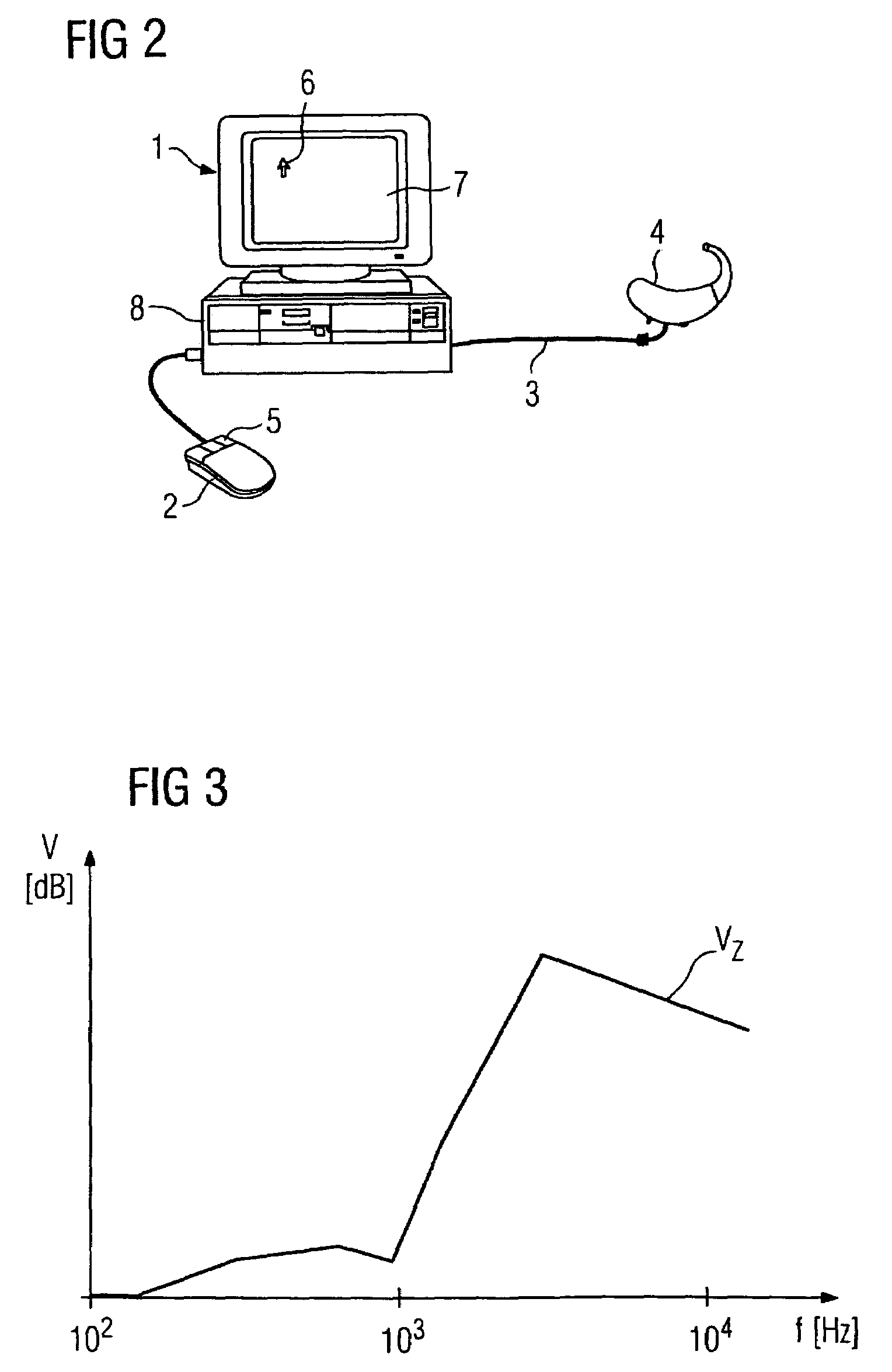Automatic gain adjustment for a hearing aid device
a hearing aid and automatic technology, applied in the direction of deaf-aid sets, deaf-aid adaptation, electric devices, etc., can solve the problems of constant acoustic feedback, inability to achieve the gain of the hearing aid device for people with more serious hearing problems, and general unpleasantness of the wearer of the hearing aid device, so as to achieve the effect of improving speech intelligibility and ensuring the gap
- Summary
- Abstract
- Description
- Claims
- Application Information
AI Technical Summary
Benefits of technology
Problems solved by technology
Method used
Image
Examples
Embodiment Construction
[0027]FIG. 1 shows the essential method steps when implementing a claimed method. First a target gain and maximum gain over frequency are defined for an individual hearing aid device wearer to be supplied with a specific hearing aid device. The target gain is thereby the gain which actually should be achieved with the hearing aid device, for example to compensate for the hearing loss of the hearing aid device wearer. The maximum gain is the gain, which can be achieved as a maximum with the hearing aid device in question, taking into account technical and anatomical conditions as a function of the frequency of an input signal. The sequence of the above two method steps is thereby inconsequential.
[0028]In a next method step it is verified whether the target gain at a specific frequency or for a specific frequency range exceeds the maximum gain. If so, the resulting gain, i.e. the gain to be set in the hearing aid device, is limited to the maximum gain for these frequencies. A “safety ...
PUM
 Login to View More
Login to View More Abstract
Description
Claims
Application Information
 Login to View More
Login to View More - R&D
- Intellectual Property
- Life Sciences
- Materials
- Tech Scout
- Unparalleled Data Quality
- Higher Quality Content
- 60% Fewer Hallucinations
Browse by: Latest US Patents, China's latest patents, Technical Efficacy Thesaurus, Application Domain, Technology Topic, Popular Technical Reports.
© 2025 PatSnap. All rights reserved.Legal|Privacy policy|Modern Slavery Act Transparency Statement|Sitemap|About US| Contact US: help@patsnap.com



